Ian Morrison, Trees and Woodlands Officer, City of Edinburgh Council
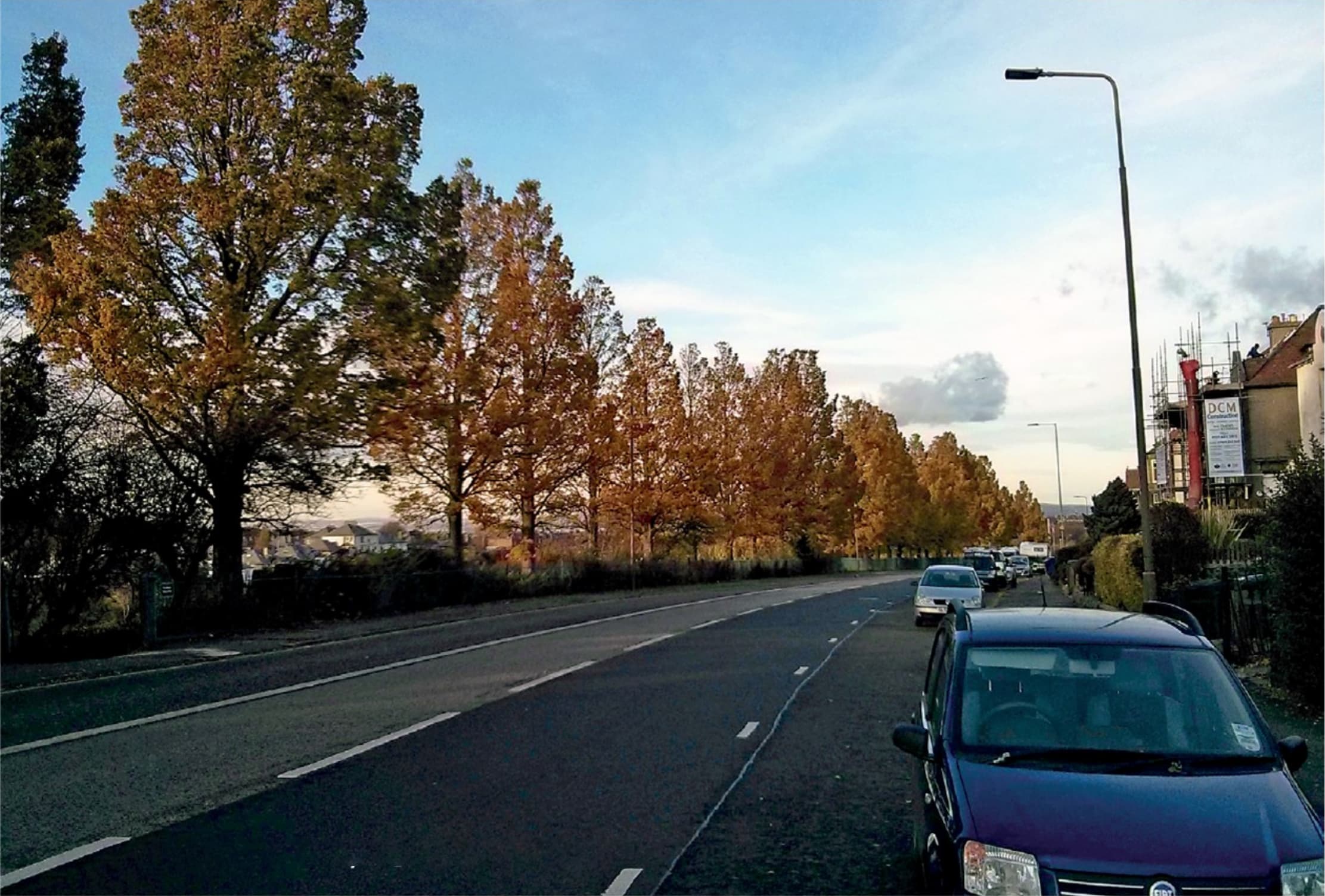
1. The Wheatley elm collection, Braidburn.
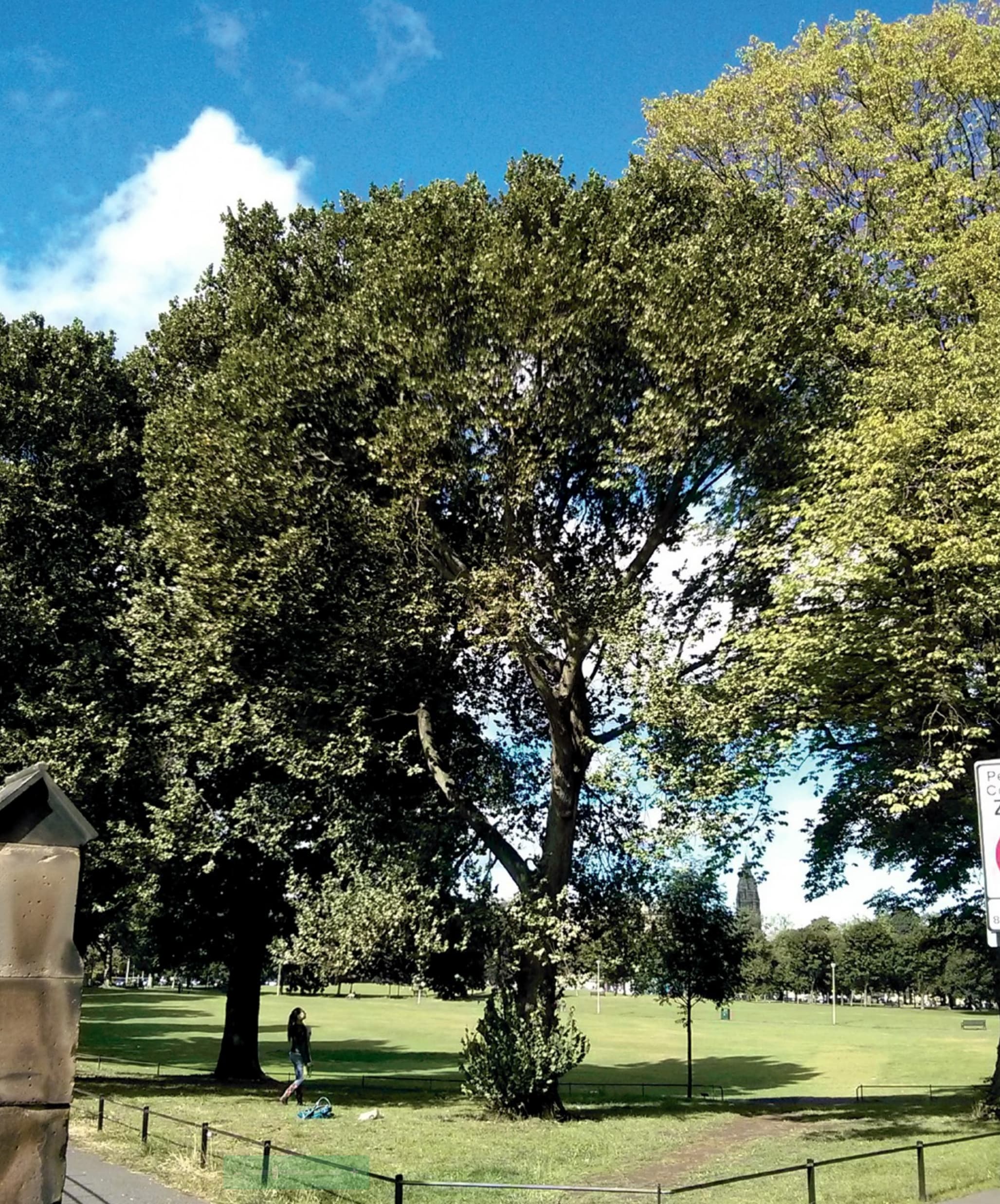
2 and 3. Ulmus glabra ‘Exoniensis’, Bruntfsfield Links West.
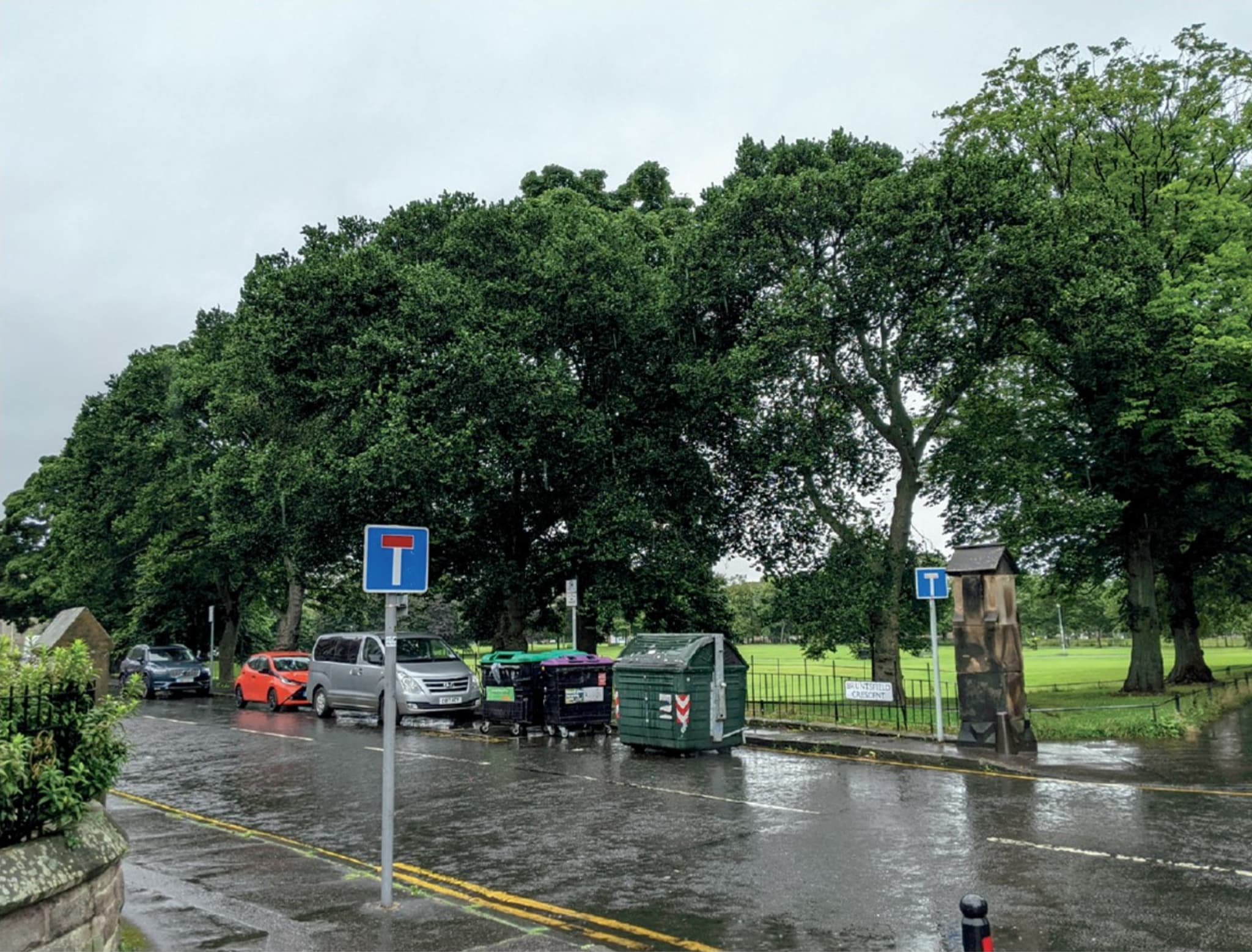
This article focuses principally on Edinburgh’s Dutch elm disease management programme, so what follows is by no means a conclusive discourse on the disease itself but rather a look into our phytosanitary strategy for dealing with this fungal pathogen and its insect vector.
Dutch elm disease (DED) was first recorded in Edinburgh in 1976, in the same year sanitation felling of diseased elms was adopted as a policy by the council. The City of Edinburgh Council DED control programme has now been in place for more than three decades and is in many ways little altered in its application from its inception all those years ago, still operating under two long standing statutory instruments of The Plant Health Act 1967, these being The Dutch Elm Disease (Local Authorities) Order 1984 and The Dutch Elm Disease (Local Authorities) (Amendment) Order 1988. The 1984 statutory instrument (SI) defines the powers in relation to those appointed to control the disease; the 1988 amended SI came four years later to outline the geographical boundaries of each local authority where those powers can be exercised more specifically.
Since 1988, the DED control programme has been the responsibility of the Culture and Leisure (Parks) department. My part within this long-standing programme has now spanned a decade working within the Council Forestry Service. Back in 2010 I started as a seasonal DED surveyor and I cannot stress how important this was in developing my understanding of DED ecology and providing an essential grounding in this rather niche role with regard to what is required for effective surveying for this tree disease.
At the end of the 2010 survey things were on the up: from the role of surveyor I progressed into the post of Assistant Trees and Woodlands Officer where one of my core duties was the annual delivery of the DED survey and sanitation programme.This was simultaneously a wonderful and a very daunting opportunity – having the responsibility for conserving such a fabulous but rare collection of elms, trees that in many respects appeared to belong naturally to the historic fabric of the city.
Through the course of managing DED I have certainly had my fair share of ups and downs. The learning curve is not forgiving, but at this moment in time we still have a remarkable group of trees that are testament to the endeavour of the council, tree officers, arborists and seasonal surveyors past and present.
The programme
The programme is split into two key operations, these being the survey to identify infected trees and then the follow up works programme to remove and correctly dispose of diseased trees on public lands, combined with official notification to private landowners to undertake removal of infected elms on their land.
The annual survey takes place over the summer months and normally lasts for a total of 13 weeks, the aim being to begin on 1 July and run till the end of September.
The survey covers the whole of Edinburgh within the boundaries outlined in the 1988 Order. Today survey management is broken down across four locality areas, each overseen by the respective locality trees and woodlands officer (T&WO), with each area encompassing four or five political wards. The survey format follows the political ward structure, with a checklist of both public and private sites with known elms listed under each ward. There are a total of 17 political wards and over 1000 survey sites in the city, ranging in size from small back gardens to expansive local nature reserves such as The Hermitage of Braid and Blackford Hill.
A first survey of all sites is normally completed by week 8 or 9, with the aim of undertaking a second survey of 50–66% of these sites in the last month. This second survey is concentrated on locations with valuable elm populations or on sites where infections have been found earlier in the summer.
We look to recruit three seasonal DED surveyors to spot and record the disease in the field, and although we hope surveyors will come with a good level of arboricultural knowledge, an initial training period of 1–2 weeks is still required. During this time the new team work together, under the guidance of the trees and woodlands officers, in some of the more prominent sites that have large numbers of elm. This approach is an effective way of building up the competence and confidence of the new surveyors in relation to:
- spotting the typical dieback symptoms;
- confirming infection via sampling;
- understanding prescriptive measures, e.g., felling procedure, ringbarking, pruning out of an infected part, climbing inspection;
- developing an intuitiveness for detecting the source of infection;
- recording infections on the designated council software via a smartphone or tablet; and
- identifying different types of elms, especially some of the rarer cultivars or hybrids in the city, and understanding the differences of disease detection and control in these species.
After this period of getting to grips with the survey technique and becoming comfortable with spotting the symptoms of DED, the survey group splits up to optimise the number of sites that can be covered daily. At the end of each day each surveyor returns to the office so that their data can be synchronised and backed up on the main server.
The benefits of mobile technology and ever improving associated software applications are there for everyone to see nowadays. In my 10 years within the service we have come so far in this regard, moving from old style PDAs and other handheld data collectors beset by battery and hardware issues to modern-day smartphones that are more rapid, reliable and robust. The tree database software application has also improved through the years and is no longer plagued by the errors that previously cost hours of lost surveying time.
The locality trees and woodlands officer is responsible for organising the survey within their area, collating the survey data on a regular basis, and where discrepancies are picked up they produce a relevant DED report that can then be double checked by the surveyor.
The T&WO also has to arrange swift action works to trees on public lands. These works will be one of the following:
- prune out of an infected part (branch, limb, stem);
- ringbark of an infected elm to prevent potential root translocation of the disease;
- order removal of a tree identified as a breeding site for the Scolytus vector; or
- climbing inspection to confirm/rule out aerial infection where the afflicted area is too high to be sampled from ground level and the exhibited symptoms are not conclusive.
Swift action works are to be completed where possible within 48 hours from the day of the data being recorded. Time is key to the success of these operations but even with a very quick turnaround the disease is often found to be ahead of us, the purple/brown streaking of the outer wood (the visible tyloses reaction of the elm to DED) already being present at the point of pruning or ringbarking.
Following completion of the survey, works orders are then generated for removal of the infected trees. This work is carried out by the council’s forestry squads from the start of October with a deadline for all DED removal works being set as 31 March of the following year. After this date as we move further into spring the Scolytus beetle can become active (weather permitting) so we want to avoid a situation where material already identified as infected is not still in situ.
Removing DED on public lands is the relatively straightforward part of the sanitation process; notifying private landowners and making sure they remove their diseased trees by the March deadline can be more complex.
We have developed strong partnerships with many of the larger private landowners in the city (e.g., Network Rail, NHS Estates, the University of Edinburgh, Historic Scotland, Holyrood Park and many more) and they have all become familiar with the DED process through the years. Certainly, the quick response of these landowners in dealing with DED on their lands has played a very important role in containing the spread of the disease. Having the larger landowners buy into what we are trying to achieve is almost taken for granted; the more difficult part can be requesting that smaller private landowners remove their diseased elm in a prompt manner. DED notification can often come as a surprise to these owners, and an added burden is that the full cost of removal/disposal must be borne by the owner, which is often unexpected. The Council Forestry Service does retain powers of enforcement for DED removal on private land, but we would typically only employ this measure as a last resort if no other solution can be achieved.
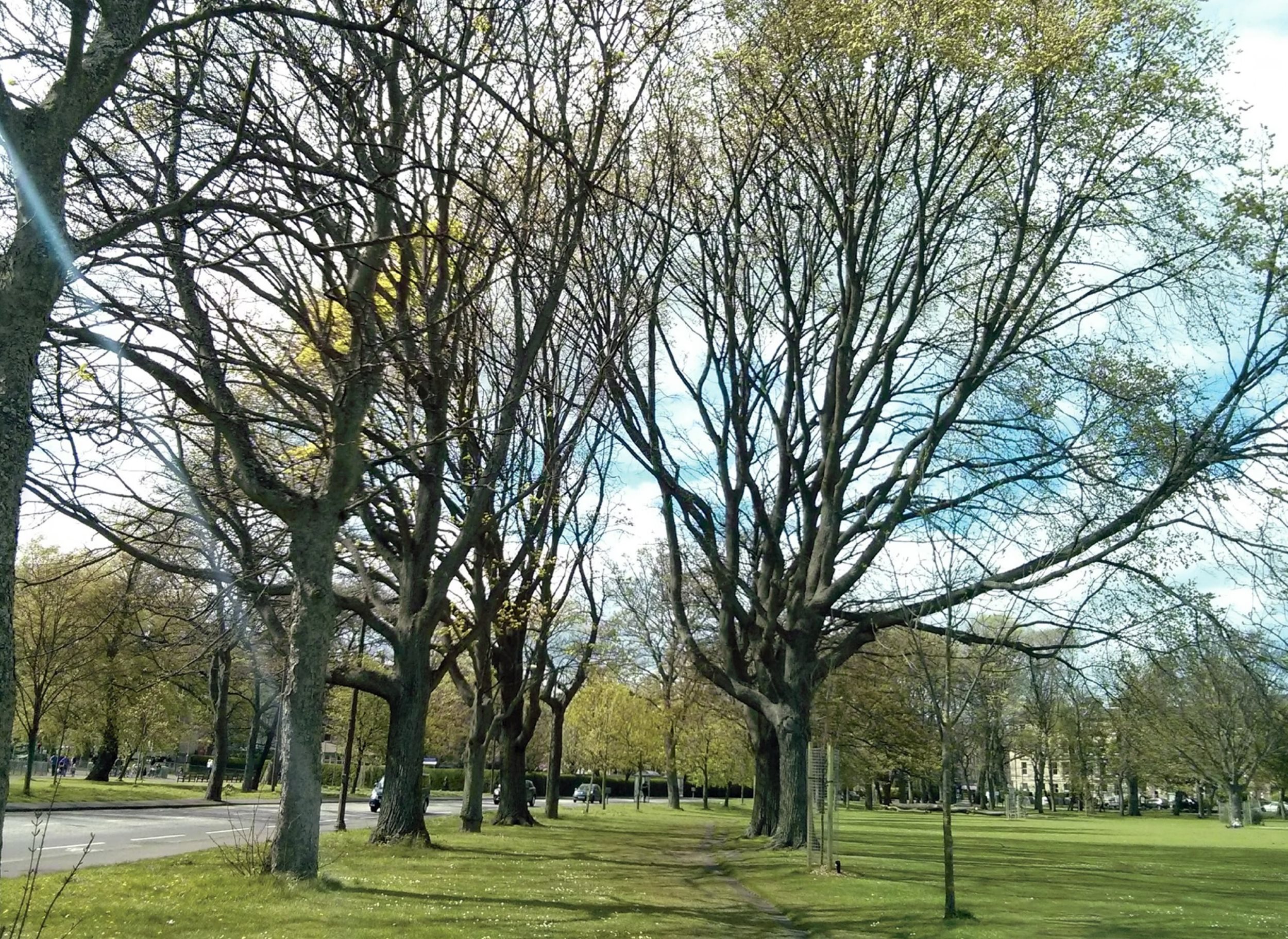
4. Ulmus × hollandica ‘Vegeta’ group, The Meadows, next to Melville Drive.
Table 1: Annual DED figures in Edinburgh
|
| Year |
Public |
Private |
Total |
| 1986 |
785 |
593 |
1384 |
| 1987 |
1041 |
702 |
1564 |
| 1988 |
669 |
713 |
1382 |
| 1989 |
542 |
308 |
850 |
| 1990 |
741 |
478 |
1219 |
| 1991 |
787 |
608 |
1395 |
| 1992 |
494 |
420 |
914 |
| 1993 |
541 |
337 |
878 |
| 1994 |
* |
* |
1164 |
| 1995 |
* |
* |
552 |
| 1996 |
* |
* |
984 |
| 1997 |
* |
* |
1232 |
| 1998 |
* |
* |
1278 |
| 1999 |
710 |
402 |
1112 |
| 2000 |
930 |
449 |
1379 |
| 2001 |
785 |
433 |
1218 |
| 2002 |
862 |
635 |
1497 |
| 2003 |
845 |
539 |
1384 |
| 2004 |
596 |
322 |
918 |
| 2005 |
381 |
181 |
562 |
| 2006 |
263 |
187 |
450 |
| 2007 |
476 |
227 |
703 |
| 2008 |
831 |
399 |
1230 |
| 2009 |
443 |
122 |
565 |
| 2010 |
480 |
209 |
689 |
| 2011 |
608 |
288 |
896 |
| 2012 |
694 |
366 |
1060 |
| 2013 |
438 |
140 |
578 |
| 2014 |
453 |
194 |
647 |
| 2015 |
349 |
279 |
628 |
| 2016 |
351 |
167 |
518 |
| 2017 |
239 |
127 |
366 |
| 2018 |
239 |
110 |
349 |
| 2019 |
180 |
84 |
264 |
| 2020 |
127 |
56 |
183 |
* = figures not available
Retaining elms in Edinburgh and why this is important
The infection rate for DED has been steadily low in Edinburgh for the last 5 years. (See Table 1.)
We believe there are a range of factors (some certain and some hypothesised) that interlink to contribute to the reduction in disease incidence, these being:
- An effective survey and sanitation programme recognised as being of key importance to the health and magnificence of the city greenspaces.
- Ever-decreasing numbers of elm, resulting in reduced disease infection opportunity, the decrease due largely to DED but also involving removal of elm based on other observed defects and storm damage.
- Decreasing presence of the main disease vectors Scolytus scolytus and Scolytus multistriatus due to the continual removal of the infected material and the prompt removal of elms confirmed as breeding sites for the beetle.
- Natural disease resistance within the remaining elm population due to the diverse elm cultivars/hybrids across sites.
- Replacement planting with a key focus on establishing species diversity within the public greenspace realm. Through this increasing diversity we hope to build resilience into the urban treescape against an increasing P&D threat. As diversity increases it goes some way to disrupting the spread of DED.
The following statement comes from a report that I submitted after my very first year of being involved with the DED programme back in 2010:
‘Edinburgh is to this day a city of such magnificent elms and these form an integral part of its beautiful landscape and atmosphere, it is only through surveying and controlling the disease over these past decades that we have managed to sustain the current elm population and prevent a sudden catastrophic loss of virtually all the elms inside the city limits.’
After 10 years’ experience this statement still rings true. The main purpose of the survey in containing the spread of the disease and preserving the historic elm population is being achieved: you only have to look around many of our city parks and woodland areas to find examples of this success:
- A population of nearly 300 Wheatley elms (Ulmus minor ‘Sarniensis’) within the city, with particularly impressive collections at Braidburn Valley Park (image 1) and around what was previously the Meadowbank Stadium adjacent to the A1.
- The Bruntsfield Links Ulmus glabra ‘Exoniensis’ group (images 2 and 3) on Whitehouse Loan opposite James Gillespie’s school.
- The four remaining mature Ulmus × hollandica ‘Vegata’ in The Meadows (image 4) next to Melville Drive.
- An impressive array of individual specimens or smaller groups spread throughout the city on both public and private lands such as the Wentworth elm (Ulmus × hollandica ‘Wentworthii Pendula’) in Holyrood Palace Gardens (image 5), and the Dutch elm (Ulmus × hollandica ‘Major’) in East Princes Street Gardens, one of three elms we believe were planted when the gardens were originally set out in the 18th century.
Many of Edinburgh’s mature park trees are elms, and often these trees are the most impressive park specimens. Testament to this has been a proposal to recognise Edinburgh as holding the national elm collection in Scotland, similar to the accolade bestowed on the elms of Brighton and Hove.
The critical importance of large species trees in the urban environment is now well documented and evidenced in such texts as The Benefits of Large Species Trees in Urban Landscapes: A Costing, Design and Management Guide (T. Armour, M. Job, R. Canavan, 2012). Information evidencing the financial, social and environmental benefits of large species trees only adds to the justification for resisting the spread of the disease for so long.
Like other municipalities across the world, we are having to deal with an increasing range of invasive tree pests and diseases, of which some will clearly have very harmful consequences for Edinburgh’s urban environment and the wider country. This is all the more reason to conserve and protect our mature elm stock as these new P&Ds threaten the survival of other species.
There is also a very simple response to the question of why it is important to preserve Edinburgh’s elms (along with any other tree for that matter) and that is, we as human beings planted them in the first place, and it is my belief we have a responsibility to fight for their survival like we would do for our own species.
Lessons learnt for the future
These are the lessons we have learnt from the DED Control Programme and some ideas about how they may be applied to future P&D threats.
DED has taught us that we need to be ever vigilant if we are to contain the spread of an aggressive pathogen and that managing a disease of this type is more a marathon than a sprint. The success in containing the spread of the disease over decades does prove that it is possible to develop an effective disease control strategy based on sound research if afforded adequate resource.
The quality and diligence of surveyor staff cannot be underestimated as key to the success to controlling the spread of DED or any P&D for that matter. Recruiting the right people is one part of the process but T&WOs also have to be able to motivate their staff and instil in them a strong sense of purpose.
Use all the tools at your disposal. If sampling is inconclusive then sample some more. Call on your colleagues for a second opinion to discuss symptoms and findings if things are not clear. In my experience two heads are usually better than one in determining possible courses of action.
We are very fortunate to have a fantastic operational team within the CEC Forestry Service, and this affords us the huge benefit of being able to call on one of our arborist squads at a moment’s notice to undertake climbing inspections where aerial infections are suspected. Prune-outs can then be attempted immediately, depending on the findings. Our arborist teams all have great experience and their conscientious approach means they often flag diseased trees to the T&WO.
Since the appearance of DED, decades of work have gone into identifying and breeding elms resistant to the disease in several countries. In Edinburgh we have taken advantage of this work by incorporating a range of these DED resistant elms into planting projects in city parks for over a decade now. Not surprisingly some have fared better than others but a word to the wise: even with years of assessed breeding trials some trees can throw up unfortunate traits. I can think of a particular Ulmus americana cultivar that has good resistance to DED but in our environment peels like a banana by the time it has reached around 6m in height. Similar breeding programmes are planned for ash dieback and hopefully some useful guidance can be extrapolated from the years of elm breeding trials.
In my opinion disease susceptibility does not mean we should forsake existing trees. The mechanisms that make one elm more resistant to DED than another are still not fully understood, although there do seem to be a range of biotic and abiotic factors at play. This is further complicated by the wide species diversity of elm. It would seem only practical to ensure the current genetic ancestry of elm is preserved, as who knows what is around the corner. The aggressive strain of DED has itself only been in the UK for roughly 50 years which really is such a short time in the life of trees, so we cannot know how some of our existing elms will fare as the disease itself evolves. It may even be possible that some of these trees hold the resistant key for future devastating pests and diseases.
In this regard, with the help of Royal Botanic Garden Edinburgh, we have propagated some of our rarer elm cultivars and hybrids which have then been used for replacement planting projects.
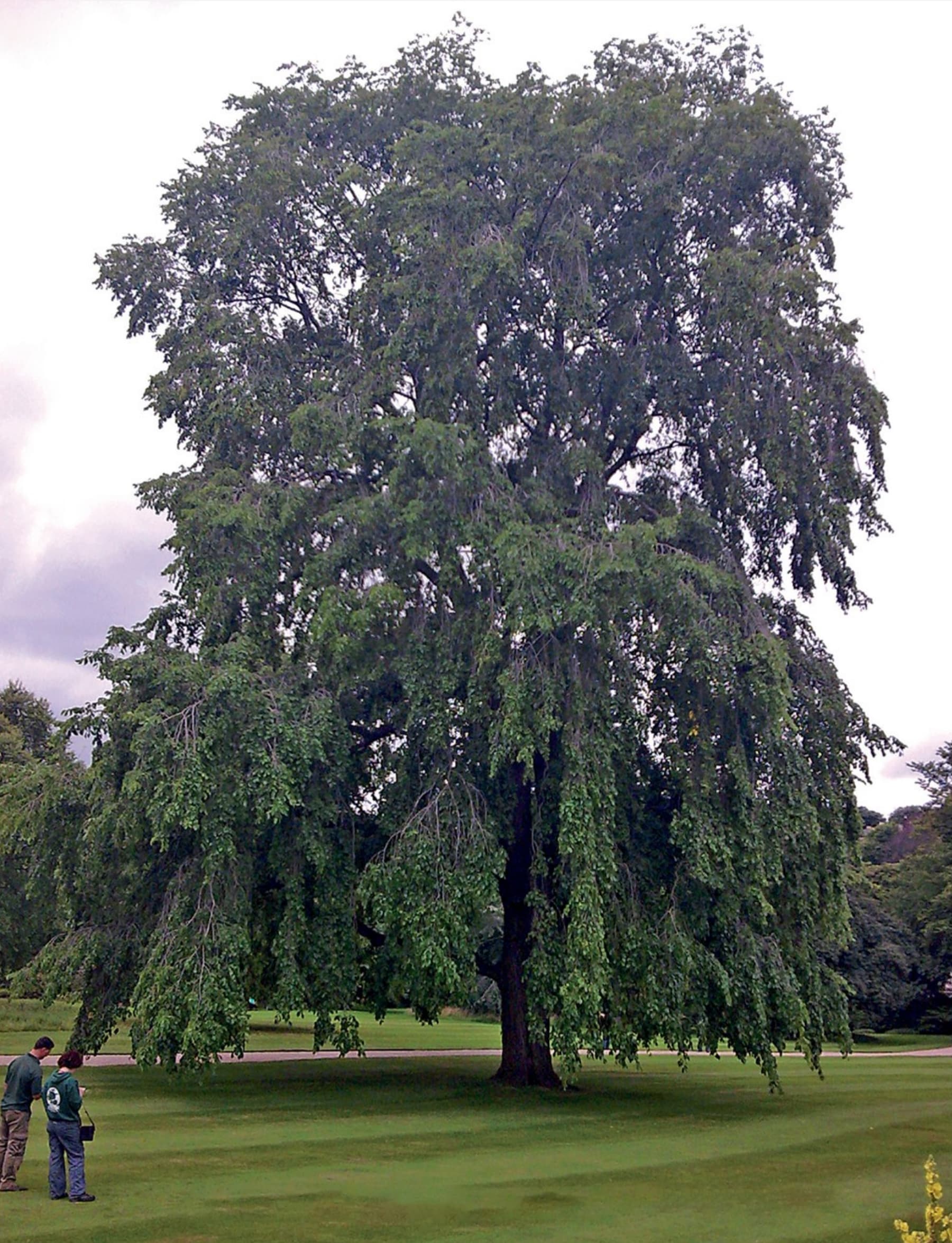
5. Ulmus x hollandica ‘Wentworthii Pendula’, Holyrood Palace Gardens.
Impact of Covid on the programme
Well, I know we have all probably had quite enough of hearing about Coronavirus so I will keep this brief. Certainly, the Covid-19 pandemic has made things very tough for many people over the past 12 months, and in amongst all the negative consequences of this disease the DED programme has been adversely affected too.
On a personal level I have been fortunate that due to its very nature of being outdoors the work of the Tree Officer has been able to continue while many in other roles have been confined to their home. Nevertheless, delivery of the 2020 programme was challenging in that we were unable to recruit seasonal surveyor staff. Thus, the T&WOs were tasked with undertaking a scaled back survey alongside our normal duties, attempting to survey for 1–2 days a week.
This has resulted in only a first survey being completed over approximately 70% of our sites, leaving the door open to the disease in places we never had time to visit, and also for late aerial infections in more prominent sites that we would normally hope to pick up during the second survey. Only time will tell what the ramifications will be for DED in Edinburgh this coming summer, but I am sure that our experienced team will be able to take on whatever challenges may lie ahead.
This article was taken from Issue 192 Spring 2021 of the ARB Magazine, which is available to view free to members by simply logging in to the website and viewing your profile area.